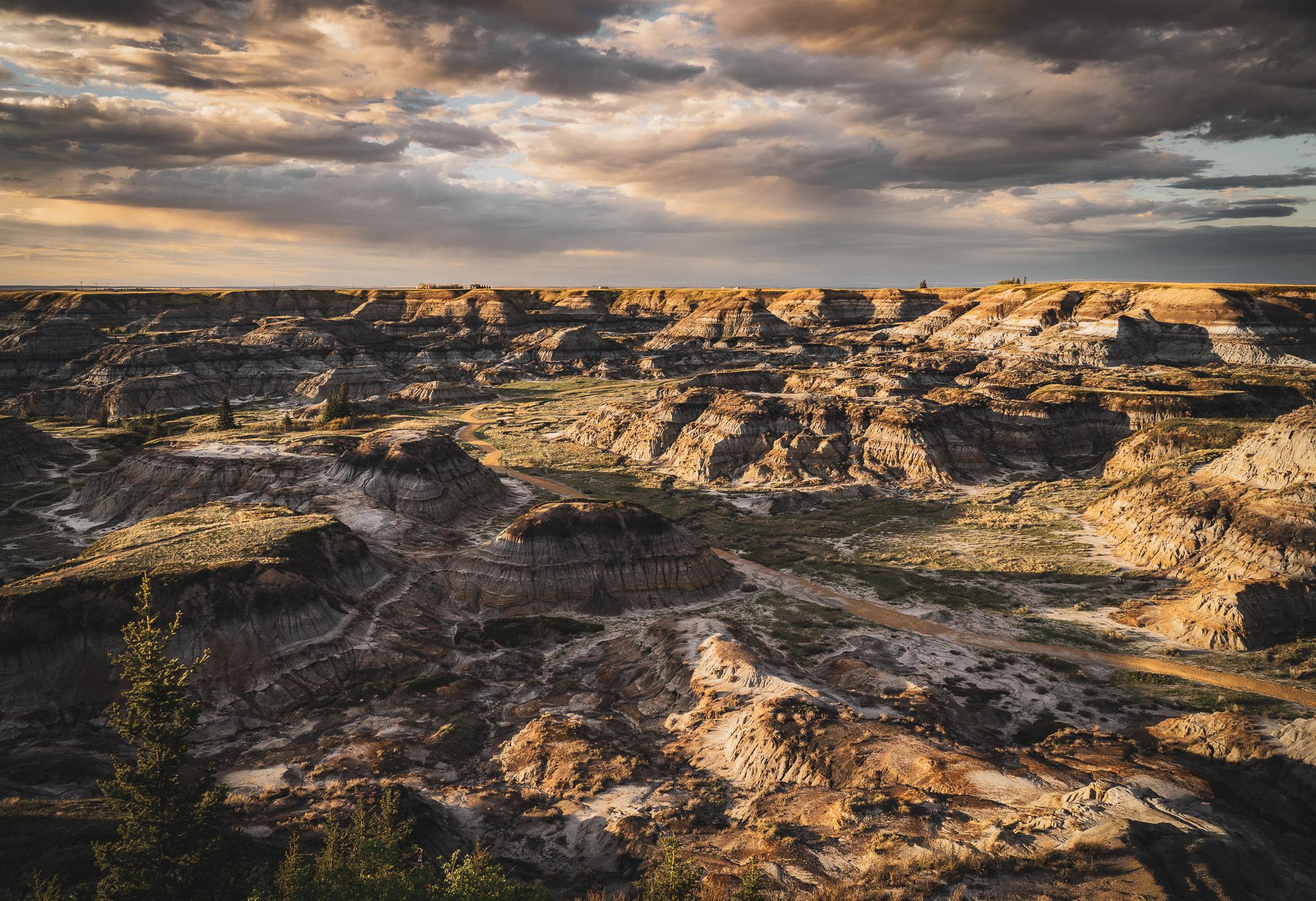Nestled on the edge of the Alberta prairies and carved over millions of years by natural erosion, Horseshoe Canyon Alberta stands as one of the province’s most awe-inspiring landscapes. Located just outside of Drumheller, this U-shaped canyon offers visitors panoramic views, rich geological history, fossil potential, and accessible hiking adventures.
Whether you’re a curious traveler, a photographer, a geology enthusiast, or simply someone seeking a peaceful escape, Horseshoe Canyon delivers an unforgettable experience without the need for a long journey.
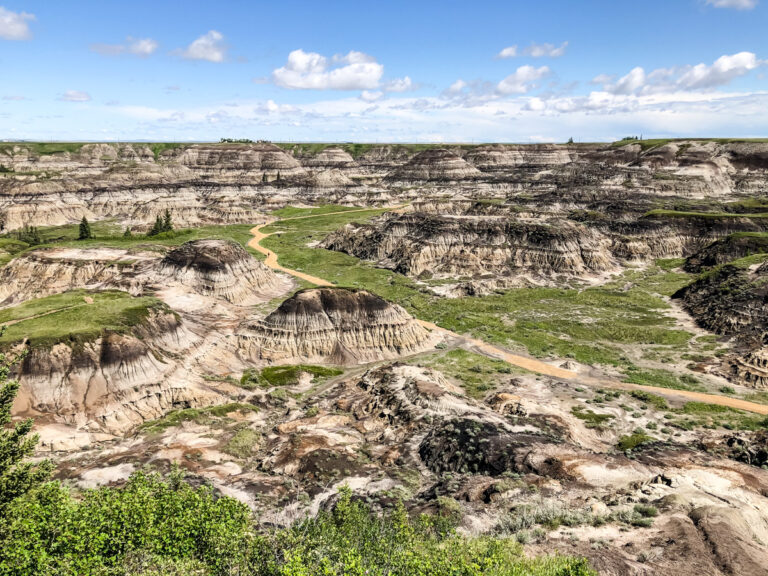
What Is Horseshoe Canyon?
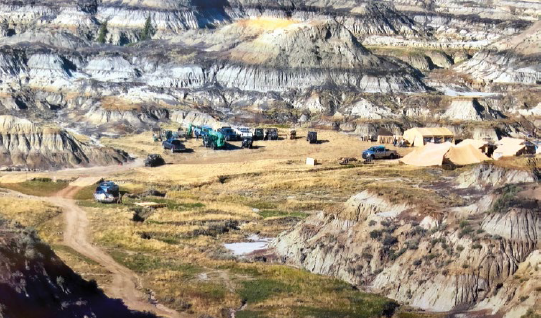
Horseshoe Canyon is a prominent feature of the Canadian Badlands, known for its steep, eroded rock walls and rugged terrain. Shaped like a horseshoe from above—hence the name—the canyon is part of the Horseshoe Canyon Formation, a geological formation from the Late Cretaceous period, about 70 to 75 million years ago.
This remarkable canyon reveals visible layers of sedimentary rock that have preserved Earth’s ancient history, including plant life, fossilized bones, and traces of prehistoric ecosystems. Today, it’s a favored destination for hikers, photographers, and families looking for a unique outdoor experience in Alberta.
Where Is Horseshoe Canyon Located?
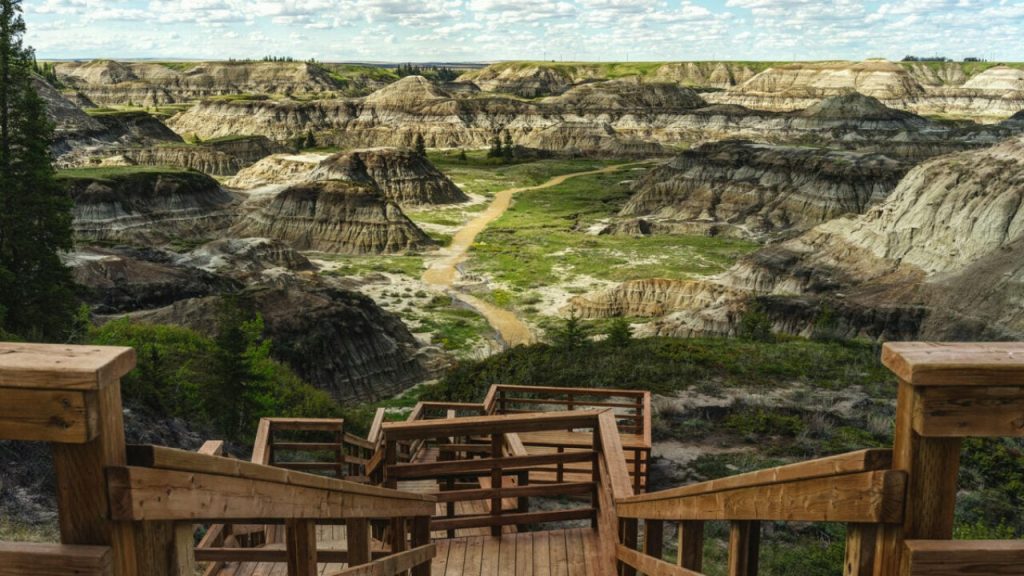

Horseshoe Canyon is located in south-central Alberta, about:
- 17 km west of Drumheller
- 135 km northeast of Calgary
To get there, take Highway 9 east from Calgary. Just before you reach Drumheller, you’ll see signs pointing to Horseshoe Canyon. A large parking lot, viewing platform, and trailhead await you at the canyon’s edge.
Its location makes it a convenient day trip from Calgary or a quick stop along the Dinosaur Trail, especially if you’re visiting Drumheller’s top attractions like the Royal Tyrrell Museum.
The Geology and Formation of Horseshoe Canyon
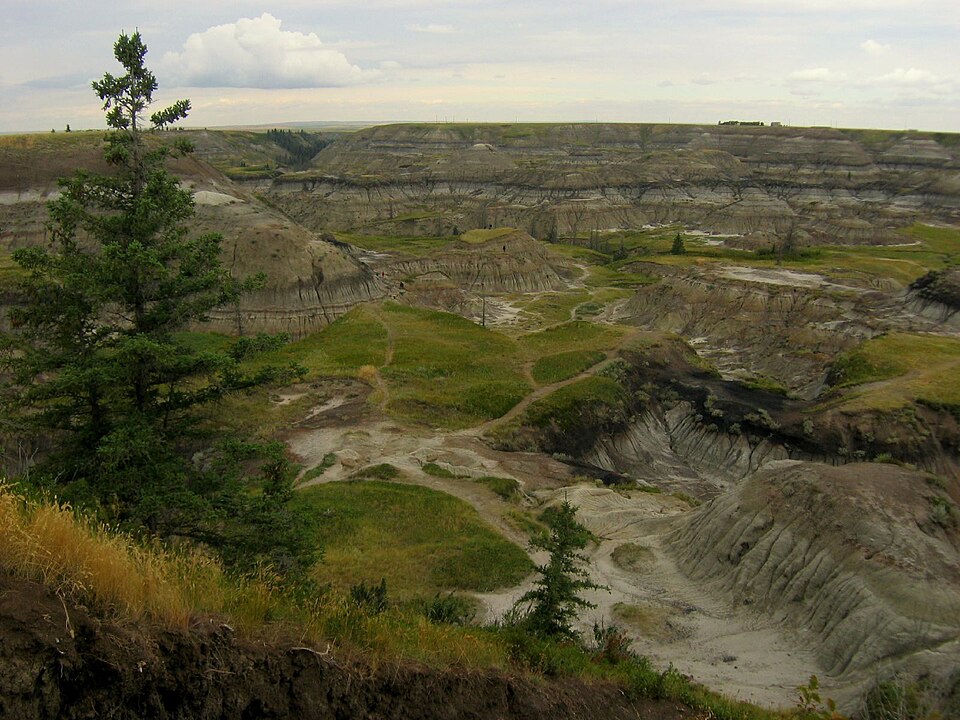
Horseshoe Canyon’s dramatic appearance was formed over millions of years through erosion by wind, water, and glacial melt. The area was once part of a coastal plain near an inland sea. As the environment changed, so did the rock layers, capturing everything from ancient forests to volcanic ash.
The canyon is part of the Horseshoe Canyon Formation, known for its alternating bands of sandstone, mudstone, coal, and shale. These layers not only create a colorful, striped appearance on the canyon walls but also provide clues to past climates and ecosystems.
Some of the sedimentary layers even contain fossils of hadrosaurs, marine reptiles, and prehistoric plants, making this site a hotspot for paleontological interest.
Hiking Trails: Explore the Canyon on Foot
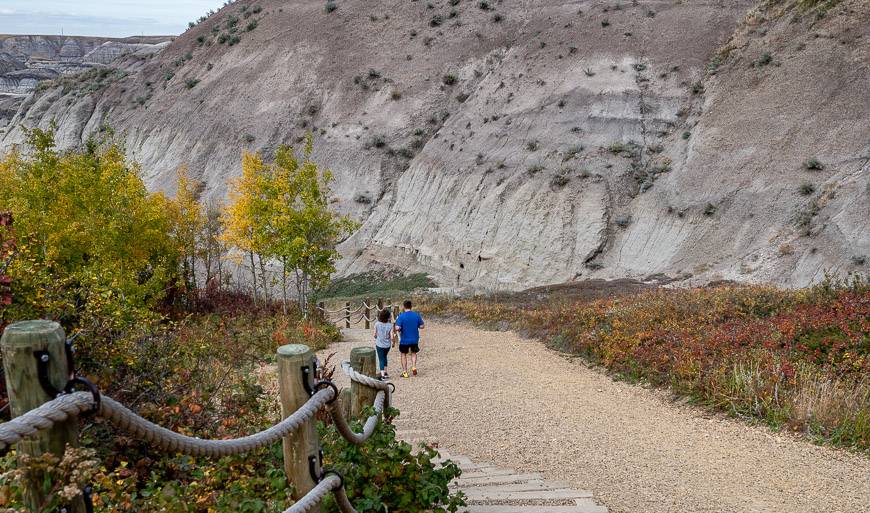
Hiking through Horseshoe Canyon Alberta is a must for anyone visiting. The canyon rim provides an excellent overview of the landscape, but descending into the canyon allows you to fully immerse yourself in the terrain.
Key Hiking Information:
- Trail Type: Informal, unmarked trails
- Difficulty: Easy to moderate
- Estimated Time: 1–2 hours
- Distance: 2–5 km, depending on your route
- Terrain: Dirt paths, loose gravel, clay, small climbs
Once you descend from the rim, you’ll find a network of natural trails that take you through narrow gullies, dry creek beds, and hoodoo-like formations. The area is great for exploration, but because the trails are not marked, be cautious and bring a GPS or stick to visible routes.
Pro Tip:
Avoid hiking right after rain—the bentonite clay becomes extremely slippery. Wear grippy hiking shoes, bring plenty of water, and keep an eye on your surroundings to avoid getting disoriented.
Fossils and Paleontology: Step Into the Dinosaur Age
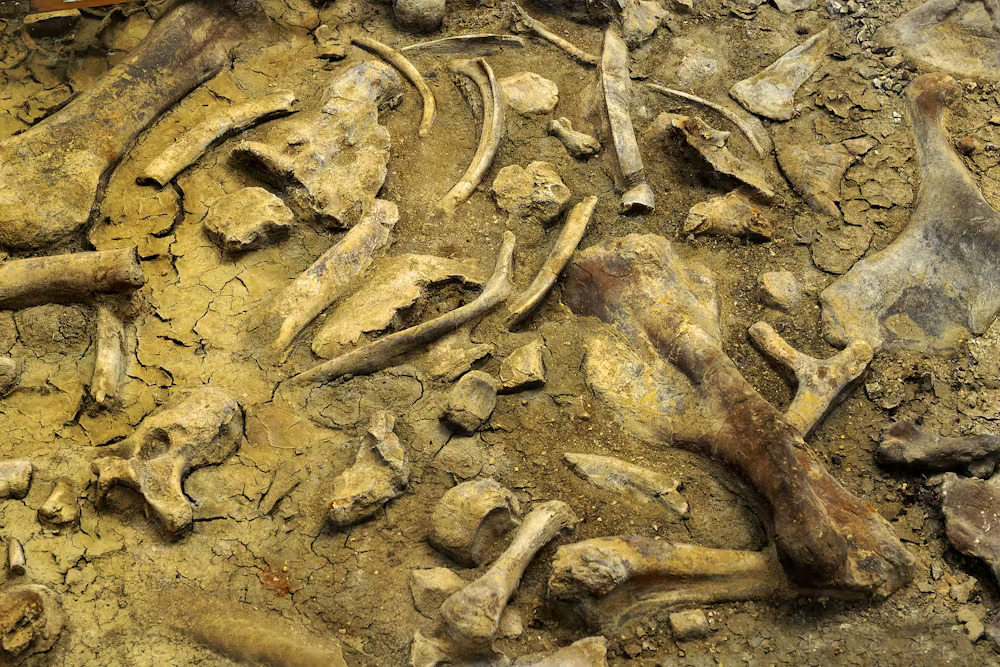
Horseshoe Canyon isn’t just beautiful—it’s also historically significant. The surrounding area is part of Alberta’s dinosaur belt, rich with fossil discoveries. In fact, Horseshoe Canyon has yielded numerous fossil finds, including dinosaur bones and preserved plant life.
In 2020, a 12-year-old visiting the canyon stumbled upon a 69-million-year-old fossilized dinosaur, which turned out to be an important paleontological discovery. While you’re not allowed to collect or remove any fossils, you can keep an eye out for small imprints and formations in the rock.
If you find something interesting, take a picture and report it to the Royal Tyrrell Museum, which regularly conducts excavations in the region.
Horseshoe Canyon Lookout: The Best Views in the Badlands
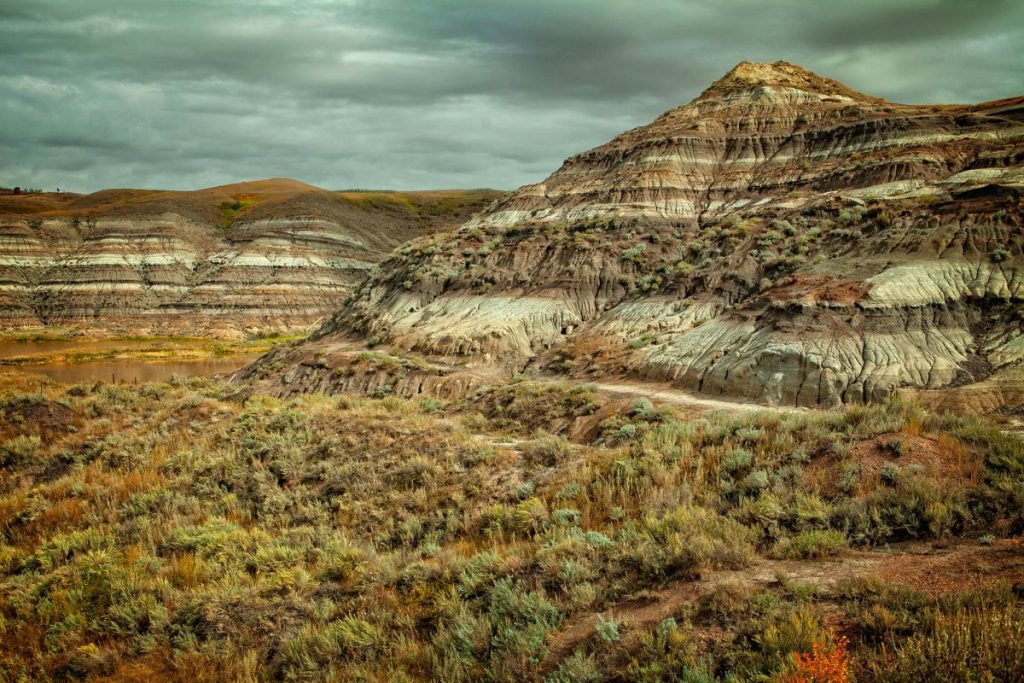
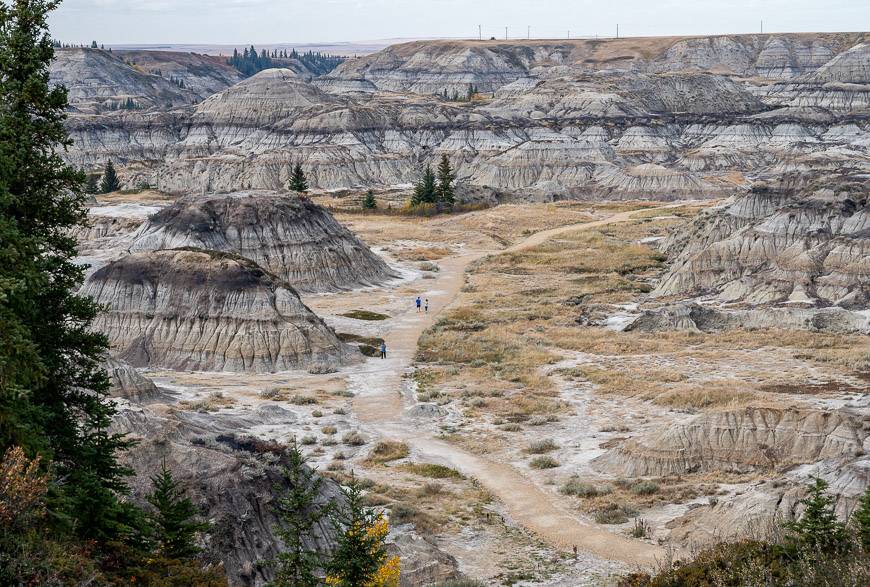
At the top of the canyon, the Horseshoe Canyon Lookout offers some of the best panoramic views of the Badlands. The viewing platform is easily accessible from the parking lot and is a popular photo stop, especially during sunrise or sunset.
From this vantage point, you can see the striking U-shape of the canyon, admire the eroded formations, and enjoy the contrast between the rolling prairie and jagged terrain below.
This is also a great spot for a picnic, rest, or drone photography (check Alberta’s regulations before flying a drone).
What to Pack for Your Trip
Even though it’s a short hike, Horseshoe Canyon’s unique environment means preparation is key.
Here’s what to bring:
- Sturdy hiking shoes with good grip
- Hat and sunglasses for sun protection
- Sunscreen and insect repellent
- Plenty of water—there’s no fountain on-site
- Snacks or a light lunch
- Camera or smartphone for pictures
- Light backpack to carry your items
Optional: A binocular for spotting wildlife or geological features and a field guide if you’re interested in identifying rock layers or fossils.
Best Time to Visit Horseshoe Canyon
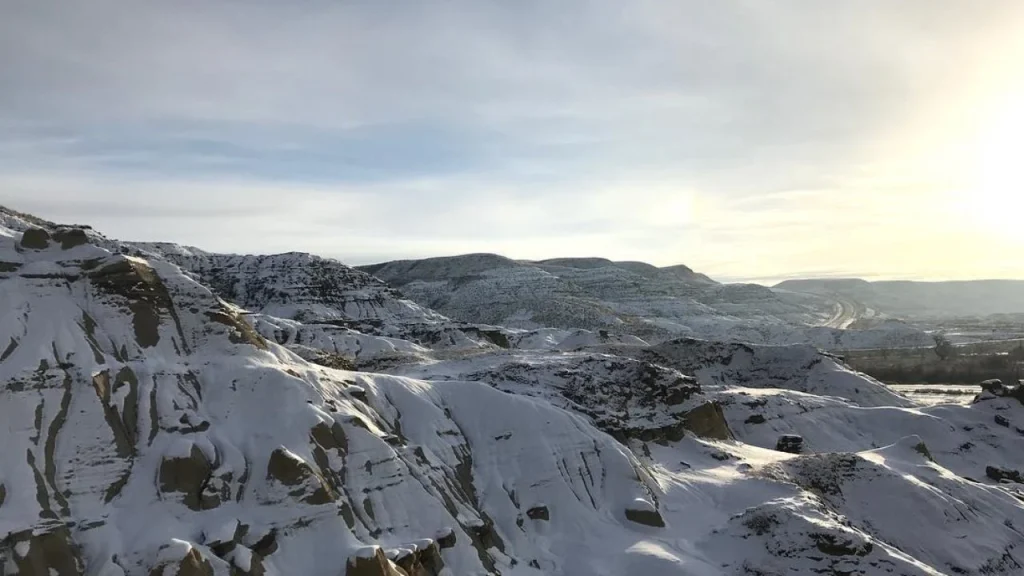
The best time to visit Horseshoe Canyon Alberta is between May and October, when the weather is warmer and trails are dry.
Seasonal Breakdown:
- Spring (May–June): Great temperatures, blooming wildflowers
- Summer (July–August): Hot, sunny, and the most popular season—arrive early to avoid crowds
- Fall (September–October): Cooler air, beautiful autumn colors, ideal for photography
- Winter: Snow-dusted canyon views are stunning, but trails are slippery and access is limited
For photographers and sunset lovers, late afternoon or early evening is the perfect time to visit for golden lighting.
Facilities and Amenities at the Site
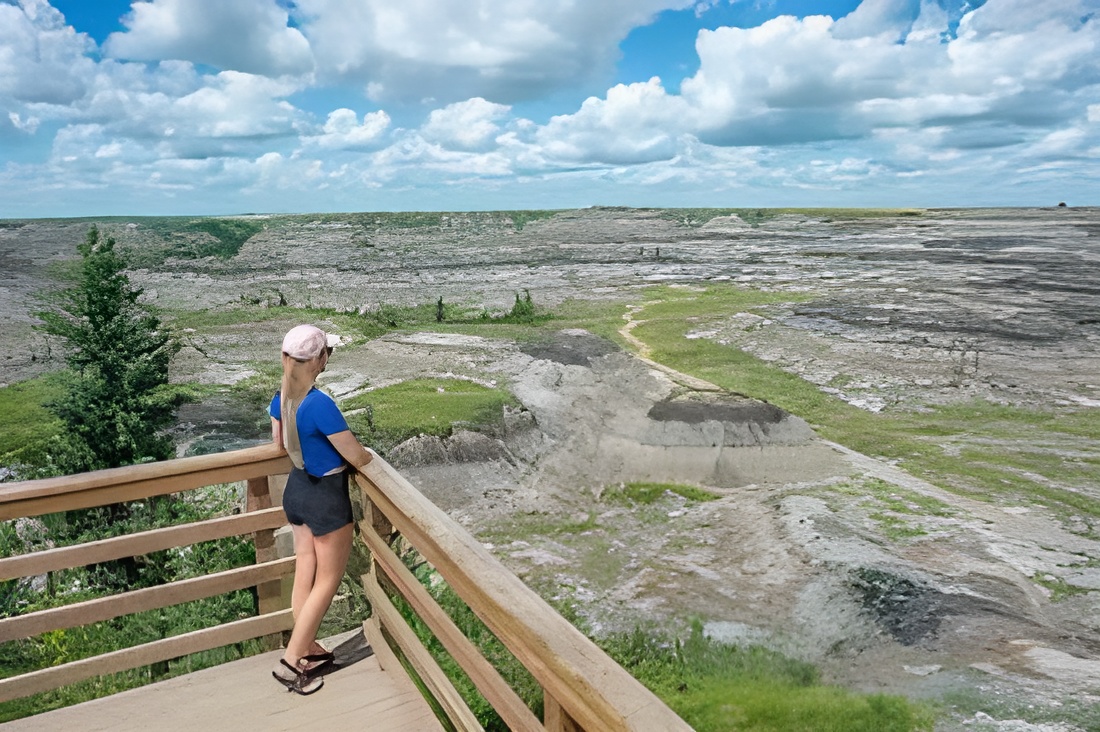
While Horseshoe Canyon is a natural attraction, there are basic facilities available for visitors:
- Free parking lot near the canyon rim
- Viewing platform with interpretive signs
- Portable restrooms (seasonal)
- Picnic tables and shaded areas
- Ice cream truck or snack vendor (usually present in summer months)
There are no trash cans or water stations, so please pack out all waste and bring enough water for your hike.
Nearby Attractions: Expand Your Badlands Adventure
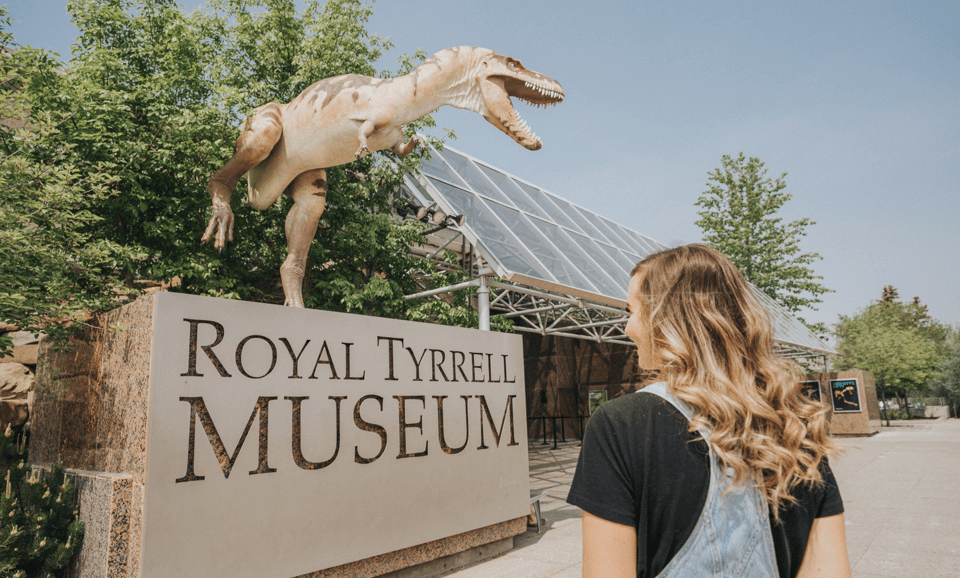

If you’re planning a full day or weekend in the area, consider adding these nearby attractions to your itinerary:
Royal Tyrrell Museum
World-class dinosaur museum with interactive exhibits, fossil galleries, and guided tours.
Hoodoo Trail
Short scenic drive from Drumheller, where you can see the region’s most famous hoodoo formations.
World’s Largest Dinosaur
A fun family-friendly spot in Drumheller where you can climb inside a 26-meter-tall T-Rex statue.
Atlas Coal Mine National Historic Site
Step back in time with underground mine tours and coal history from Alberta’s early days.
Final Thoughts: Why Horseshoe Canyon Should Be on Your Alberta Bucket List
Horseshoe Canyon Alberta is one of the province’s most fascinating natural wonders. With its deep geological history, wide-open landscapes, and prehistoric significance, it offers an experience that’s as educational as it is breathtaking.
From hiking and photography to fossil spotting and stargazing, Horseshoe Canyon appeals to travelers of all ages and interests. Its accessibility and free entry make it a budget-friendly yet enriching stop in any Alberta itinerary—especially if you’re exploring the Drumheller region.
So next time you’re craving adventure, skip the usual and step into Alberta’s ancient past.

